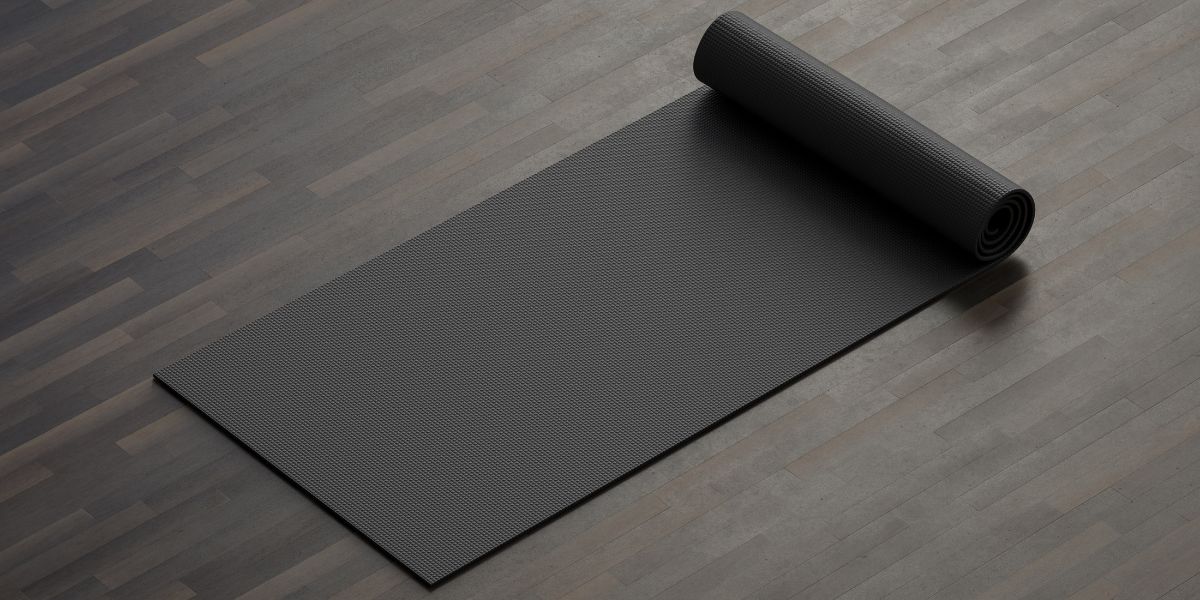
When seeking a top-notch yoga mat, it's crucial to carefully examine various aspects to ensure it meets your needs and enhances your practice. Factors like thickness, material, texture, durability, and eco-friendliness play pivotal roles in determining the ideal mat for you. Each element contributes uniquely to your comfort, sustainability, and overall yoga experience. So, before making your choice, delve into these considerations to select a mat that perfectly aligns with your preferences and goals.
Thickness
When selecting a yoga mat, consider the thickness that best suits your practice. The thickness of your yoga mat can significantly impact your comfort and stability during your practice.
Thicker mats, typically around 1/4 inch, provide more cushioning and support for your joints, making them ideal for individuals with sensitive knees or those who prefer a softer surface. These mats are great for restorative or yin yoga practices where you spend more time on the floor in various poses.
On the other hand, thinner mats, usually around 1/8 inch, offer a firmer and more stable foundation for balancing poses and active styles of yoga like Vinyasa or Ashtanga. They provide a stronger connection to the ground, allowing you to feel more grounded and stable during your practice.
Consider the types of yoga you primarily engage in to determine the thickness that will best support your needs and enhance your overall yoga experience.
Material
Choosing the right material for your yoga mat is crucial to ensuring durability and comfort during your practice. The material of a yoga mat can greatly impact your overall experience. The most common materials for yoga mats are PVC, TPE, rubber, and cotton or jute.
PVC mats are durable and provide excellent grip but may not be the most environmentally friendly option. TPE mats are eco-friendly, lightweight, and have good cushioning. Rubber mats offer great grip and are sustainable but can be heavier. Cotton or jute mats are natural, provide good traction, and are suitable for those sensitive to synthetic materials.
Consider factors such as sustainability, texture, and your own preferences when choosing the material for your yoga mat. Selecting a material that aligns with your values and enhances your practice will ensure that you can fully enjoy your yoga sessions.
Texture
Considering the texture of a yoga mat is essential for your practice's comfort and stability. The texture of a yoga mat affects how grippy the surface is, preventing slips and helping you maintain poses with ease. Mats with a textured surface provide traction, especially during sweaty sessions or vigorous practices, offering a more secure foundation for your poses. A textured mat can also help align your hands and feet correctly, enhancing your overall practice experience.
When selecting a yoga mat based on texture, consider the balance between grip and comfort. Mats with a rougher texture often provide better grip but might be less comfortable for certain poses, while smoother textures offer more comfort but sometimes sacrifice grip. If you prefer a softer feel, opt for a mat with a smoother texture, but if stability and traction are your priorities, go for a mat with a more textured surface. Finding the right balance will ensure that your yoga mat complements your practice style and enhances your performance.
Durability
To ensure the longevity of your yoga mat, assessing its durability is key for maintaining the quality of your practice gear. When evaluating the durability of a yoga mat, consider the materials used in its construction. High-quality mats are often made from materials like natural rubber, PVC, or TPE, which are known for their durability and ability to withstand regular use without deteriorating quickly. Look for mats with reinforced edges and a sturdy construction to prevent fraying or tearing over time.
Another factor to consider is the thickness of the mat. Thicker mats tend to be more durable as they provide extra cushioning and support, making them less prone to wear and tear. Additionally, mats with a textured surface or a closed-cell design are more resistant to scratches, dents, and punctures, ensuring a longer lifespan.
Regularly cleaning and storing your yoga mat properly can also contribute to its durability. By taking these factors into account, you can choose a durable yoga mat that will support your practice for years to come.
Eco-friendliness
Have you ever wondered how eco-friendly yoga mats contribute to a sustainable practice and environment? Choosing an eco-friendly yoga mat can significantly reduce your carbon footprint and support the well-being of the planet. These mats are typically made from natural, biodegradable materials like rubber, cork, or jute, which are renewable resources that minimize harm to the environment during production and disposal.
Opting for an eco-friendly yoga mat means you're investing in a product that's free from harmful chemicals and toxins often found in traditional mats. These chemicals can be detrimental to your health and the environment, making eco-friendly options a safer choice for both you and the planet.
Additionally, eco-friendly yoga mats often have a longer lifespan than conventional mats, reducing the frequency at which you need to replace them and ultimately decreasing waste. By choosing a sustainable mat, you aren't only enhancing your yoga practice but also playing a part in preserving the Earth for future generations.




